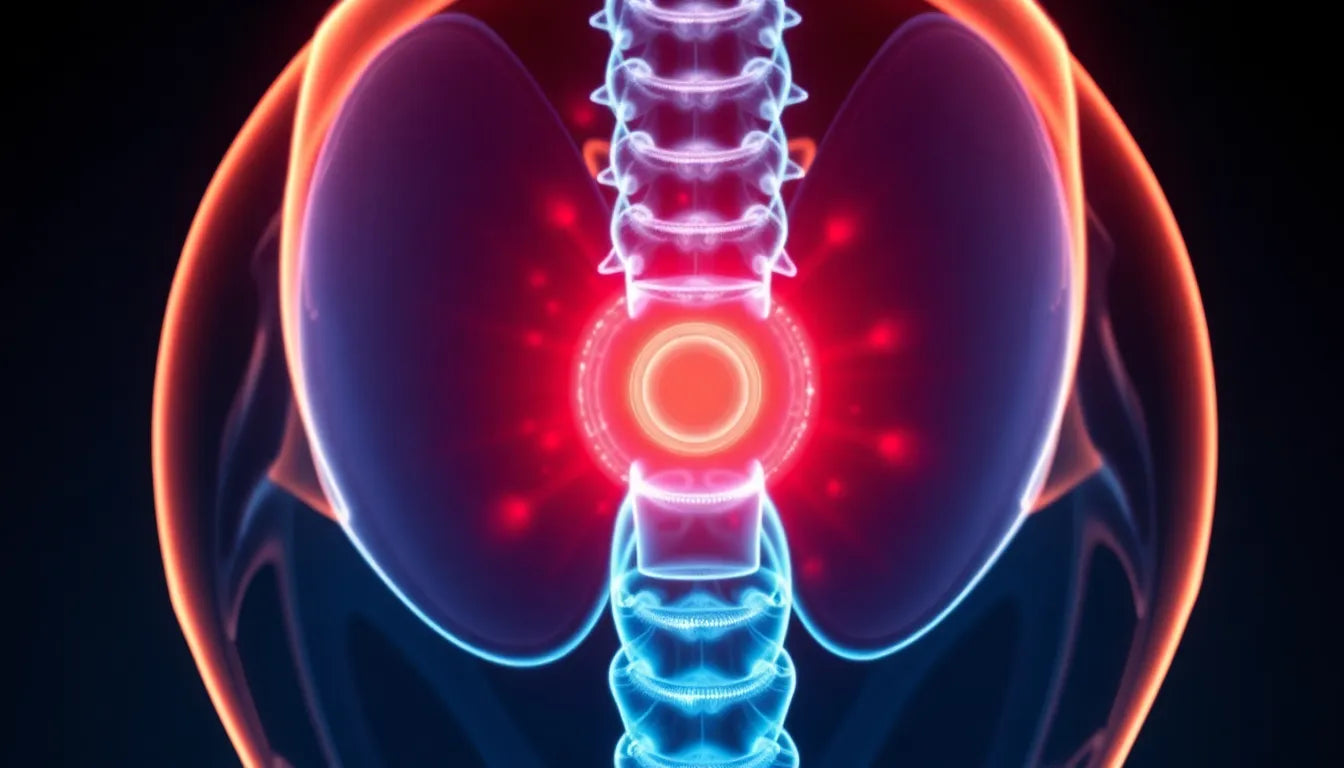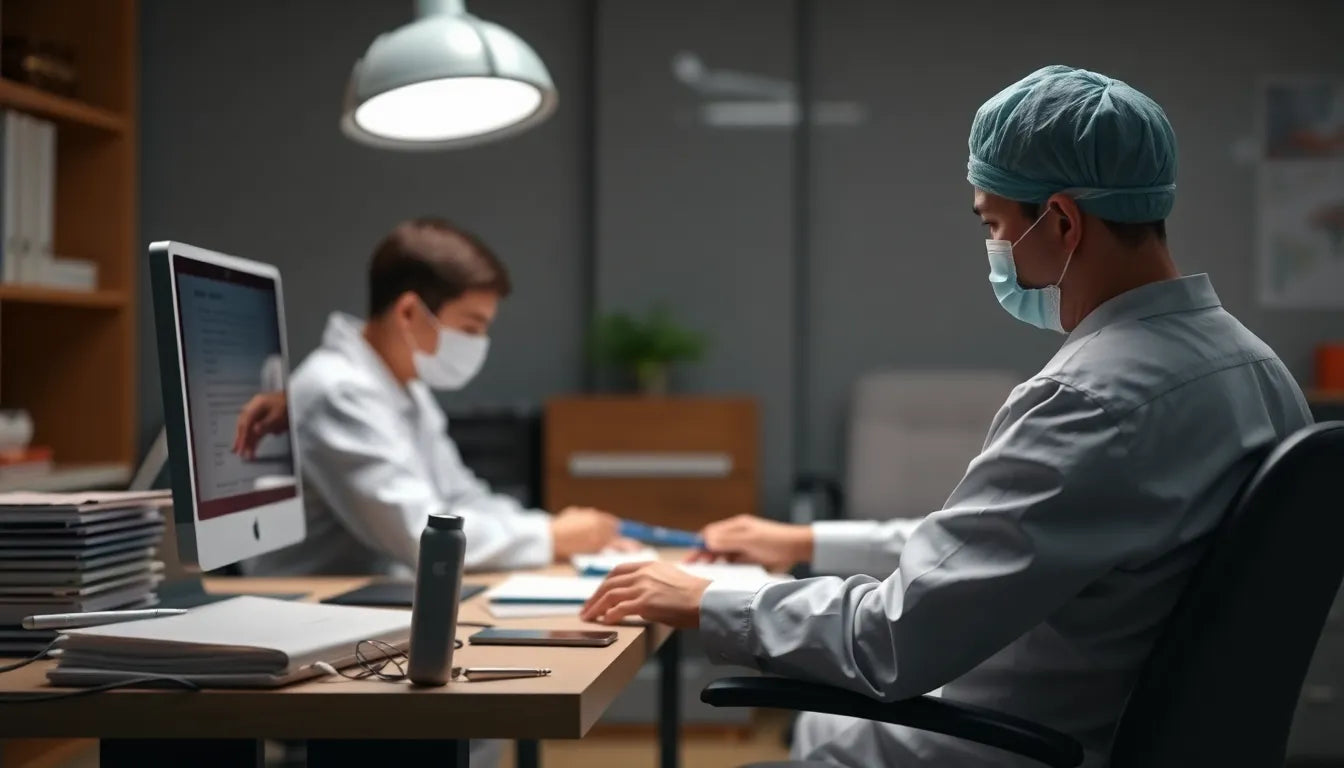Understanding the signs of a herniated disc is crucial for anyone experiencing back pain or discomfort. A herniated disc, also known as a slipped or ruptured disc, occurs when the soft, jelly-like center of a spinal disc pushes through a crack in its tougher exterior casing. This condition can lead to significant pain and, if left untreated, may result in more severe complications. Recognizing the symptoms early on is essential for effective pain management and to prevent further damage. Additionally, incorporating ergonomic solutions can play a vital role in both managing and preventing issues related to herniated discs.
the prevalence of herniated discs
Herniated discs are a common spinal condition affecting a wide range of individuals, particularly those with physically demanding jobs or those leading a sedentary lifestyle. The spine is a complex structure, and the discs play a crucial role in cushioning the vertebrae, allowing for flexibility and movement. When a disc herniates, it can press on nearby nerves, leading to pain and discomfort. Understanding the symptoms associated with a herniated disc is critical for timely diagnosis and treatment, which can significantly improve outcomes and quality of life.
Many people may not realize they have a herniated disc until they experience noticeable symptoms. These can include sharp or shooting pain that radiates from the back into the arms or legs, numbness or tingling sensations, muscle weakness, and back muscle spasms. In some cases, individuals may experience a condition known as sciatica, where pain starts near the back or buttock and travels down the leg. However, it's important to note that some people may have a herniated disc without experiencing any symptoms at all, making awareness and regular check-ups all the more important.
Given the prevalence of herniated discs, it's essential to understand the role of ergonomics in both the development and management of this condition. Poor posture, improper lifting techniques, and prolonged periods of sitting can all contribute to disc herniation. By integrating ergonomic solutions into daily life, such as adjusting workstations, using supportive furniture, and practicing proper body mechanics, individuals can reduce their risk of developing a herniated disc and manage existing symptoms more effectively.
In summary, being informed about the signs and symptoms of a herniated disc is the first step towards addressing this common spinal issue. Recognizing the importance of early diagnosis and the role of ergonomics in prevention and management can empower individuals to take control of their spinal health and improve their overall well-being.
key symptoms to watch for in a herniated disc
Recognizing the symptoms of a herniated disc can be the first step towards obtaining the necessary treatment and preventing further complications. One of the most common indicators is pain, which can vary depending on the location of the herniation. Individuals often experience sharp or shooting pain that may radiate from the back into the arms or legs. This pain can affect areas such as the buttocks, thighs, calves, and feet. A related condition, known as sciatica, involves pain that starts near the back or buttock and travels down one leg, often accompanied by a burning or tingling sensation.
In addition to pain, numbness or tingling is another key symptom. These sensations often travel outward along the affected nerves into the extremities, leading to discomfort and a feeling of pins and needles. Muscle weakness is also a significant symptom, as it can impact walking ability and overall muscle function in the legs or arms. This weakness may cause difficulty in performing daily activities and lead to a decrease in physical activity.
Back muscle spasms, which are involuntary contractions of the back muscles, can also occur. These spasms can be painful and may limit mobility, making it difficult to move or stand for extended periods. It is important to note that while these symptoms are common, some individuals with a herniated disc might not experience any symptoms at all, underscoring the need for regular check-ups and awareness of spinal health.
diagnostic methods for identifying a herniated disc
Accurate diagnosis of a herniated disc is crucial for effective treatment. The diagnostic process typically begins with a physical examination, where a healthcare provider assesses reflexes, muscle strength, walking ability, and sensory responses. These tests help determine the extent of nerve involvement and the impact on physical function.
A comprehensive medical history review is also important, as it provides context for the individual's symptoms and potential risk factors. Understanding a patient's medical background can help identify the underlying causes of the herniation and inform the treatment approach.
Imaging tests play a vital role in confirming a herniated disc diagnosis. MRI scans are considered the gold standard, as they provide detailed images of the spine and can clearly show the position of the herniated disc. Other imaging tests, such as CT scans and X-rays, can offer additional insights, with CT scans creating three-dimensional images of the spine and X-rays providing a basic overview. Myelograms, which involve the injection of dye into the spinal fluid, can also be used to highlight the spinal cord and nerves.
Nerve function tests, including electromyogram (EMG) and nerve conduction studies, are used to assess the extent of nerve damage or compression. These tests measure the electrical activity in muscles and nerves, helping to pinpoint the affected areas and guide treatment decisions.
By understanding the key symptoms and diagnostic methods for a herniated disc, individuals can take proactive steps in seeking medical attention and managing their condition. Early diagnosis and intervention are essential for reducing pain and preventing further damage, ultimately improving quality of life.
Ergonomic considerations and self-care for herniated discs
Addressing a herniated disc involves more than just medical treatments; it also requires attention to ergonomic factors that can either contribute to or alleviate the condition. Poor posture, improper lifting techniques, and extended periods of sitting are common culprits that exacerbate herniated disc issues. By making ergonomic adjustments in your daily life, you can manage symptoms more effectively and prevent further damage.
One of the simplest yet most impactful changes is adjusting your workstation. Ensure your computer screen is at eye level and your chair supports the natural curve of your spine. Using a chair with lumbar support can significantly reduce strain on your back. Additionally, taking regular breaks to stand, stretch, and walk around can help alleviate pressure on your spine.
At home, consider using supportive furniture that promotes good posture. When lifting objects, always bend at the knees and keep the object close to your body to minimize stress on your back. These small changes can make a substantial difference in managing the symptoms of a herniated disc and enhancing your overall spinal health.
Recovery and prevention strategies for herniated discs
Incorporating ergonomic solutions is essential not only for managing existing herniated disc symptoms but also for preventing future issues. Engaging in regular physical activity, such as walking, swimming, or yoga, can strengthen the muscles supporting your spine and improve flexibility. These exercises should be performed with caution and ideally under the guidance of a healthcare professional to avoid aggravating your condition.
Lifestyle changes, such as maintaining a healthy weight and quitting smoking, can also have a positive impact on spinal health. Excess weight can increase the strain on your spine, while smoking reduces blood flow to the discs, hindering healing and increasing the risk of disc degeneration.
For those already experiencing herniated disc symptoms, it's crucial to recognize when to seek immediate medical attention. Symptoms such as loss of bladder or bowel control, severe pain that doesn't improve with rest, or significant muscle weakness may indicate a more serious issue requiring urgent care.
Frequently Asked Questions
Can a herniated disc heal on its own?
Yes, some herniated discs can heal on their own over time with conservative treatment, such as rest, physical therapy, and pain management. However, if symptoms persist or worsen, medical intervention may be necessary.
What activities should I avoid if I have a herniated disc?
To prevent worsening symptoms, avoid activities that involve heavy lifting, prolonged sitting, or high-impact sports. These activities can increase pressure on the spine and exacerbate the condition.
How long does it take to recover from a herniated disc?
Recovery time varies depending on the severity of the herniation and the individual's adherence to treatment plans. While some people recover within weeks, others may take several months to heal completely.
Is surgery always necessary for a herniated disc?
Surgery is often considered a last resort for herniated discs. Many cases can be managed successfully with non-surgical treatments, such as physical therapy, medication, and lifestyle modifications.
Can ergonomic aids help with herniated disc pain?
Yes, ergonomic aids can be beneficial in managing herniated disc pain. They support proper posture and reduce strain on the spine, which can alleviate pain and prevent further injury.
Sources
- Mayo Clinic Staff. "Herniated Disk." Mayo Clinic.
- Cleveland Clinic. "Herniated Disc." Cleveland Clinic.
- Johns Hopkins Medicine. "Herniated Disk." Johns Hopkins Medicine.
- Weill Cornell Medicine. "Herniated Disc." Weill Cornell Brain and Spine Center.
- Medical News Today. "What to Know About Herniated Disks." Medical News Today.


















